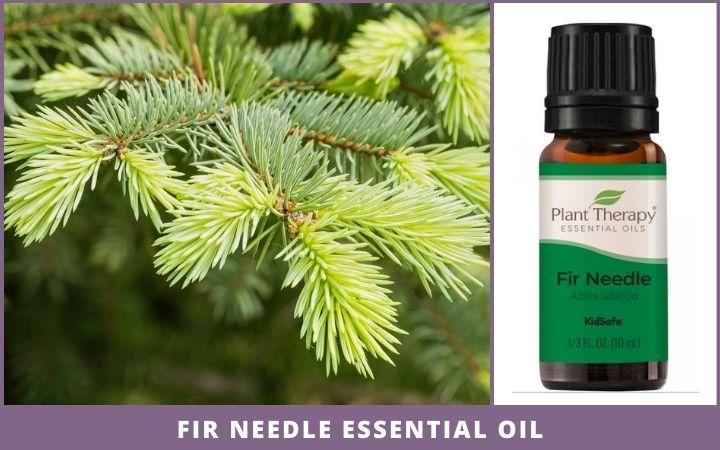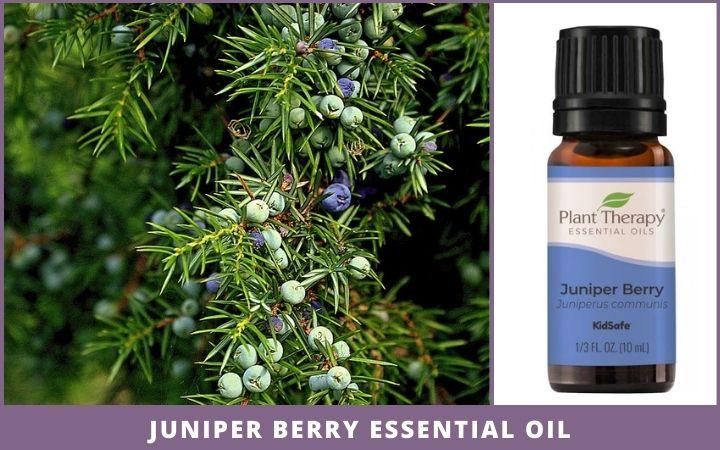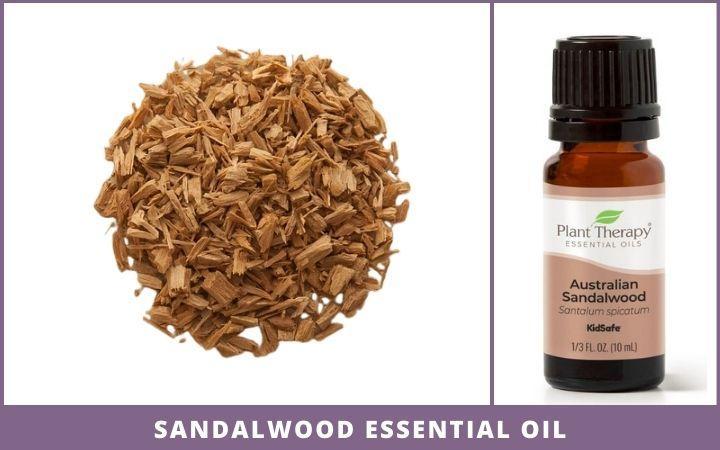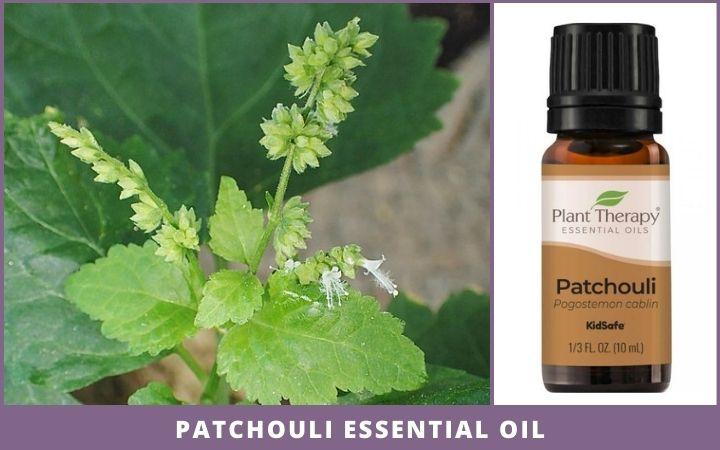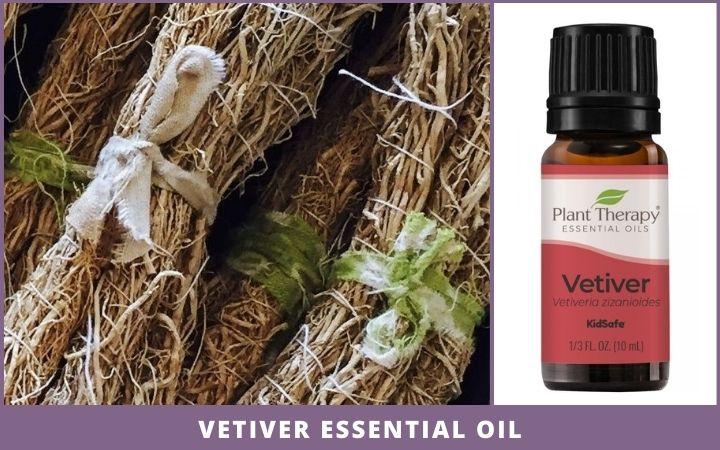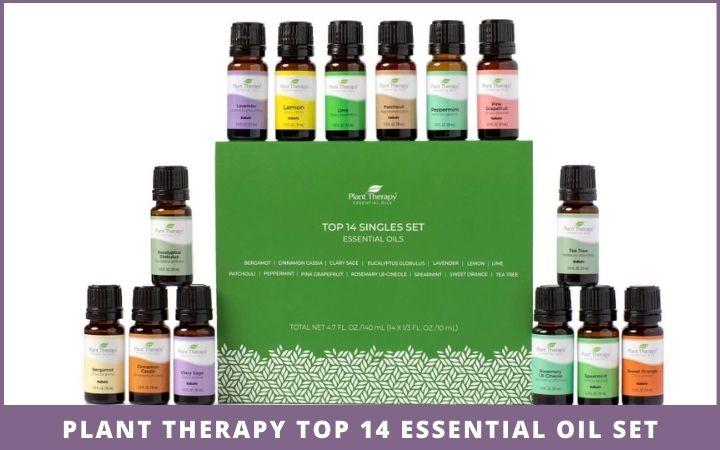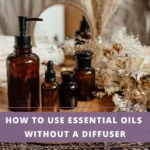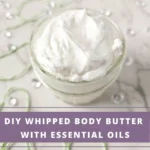As an Amazon Associate I earn from qualifying purchases. See Full Disclosure Here
Understanding essential oil aroma families can take your aromatherapy experience to the next level
Once you know more about aroma families and which essential oils belong in the different categories, you can experiment with various combinations of oils and aromas to create some unique customized scents. How cool is that!
Learning about essential oil aroma families opens up the door to endless possibilities with unexpected results.
2 Items that will come in handy when creating customized scents
The first is ‘The Complete Book Of Essential Oils & Aromatherapy’ by Valerie Worwood.
This is a reference book that will come in really handy while learning about essential oil aroma families. The book includes lots of essential oil blend recipes for diffusing during different seasons of the year.
The book also includes profiles of 125 essential oils, 37 carrier oils, and more. This is very useful for understanding how different blends use a combination of essential oils from different aroma families.
In addition to blends, the book contains over 800 all-natural, non-toxic recipes for making perfumes, and bath and body care items.
The second item is an essential oil journal or recipe book where you can keep a record of the different blends you’ve tried. Write down the recipe of every blend you’ve used in your diffuser or DIY items. Do this whether it’s your own blend or you’ve used one you found online
Also, make notes against each recipe highlighting whether you liked it or not and how you could improve the scent. You never know when you may stumble across a blend that you absolutely love and would want to replicate. When you have the recipe written down, it will be easier to replicate your favorite scents.
Here’s a more detailed look at essential oils and their aroma families.
 Essential oils fall into one of 8 aroma families:
Essential oils fall into one of 8 aroma families:
1. Floral
2. Citrus
3. Camphoraceous
4. Herbaceous
5. Spicy
6. Woody
7. Resinous
8. Earthy
The detailed look at the essential oil aroma families includes the aroma profiles of the general aroma family as well as the aroma profiles of the top 3 -5 essential oils in each aroma family.
1. Floral Aroma Family
Floral essential oils are extracted exclusively from the petals of flowers. No other plant parts are used when obtaining these extracts, which gives the oils their distinctly sweet, fresh, and floral aroma.
Learn more details about this aroma family here: Floral Essential Oils – The Ultimate Guide
This is one of the more popular aroma families not just for its delicate floral aroma but also for its diverse therapeutic properties.
Essential oils in the floral aroma family are great for promoting relaxation and sleep, boosting mood, and reducing stress and anxiety.
Floral scents blend well with essential oils from the citrus, woody, and spicy aroma families. They inject the blend with soft floral notes that reduce the strong sharp aromas of the other scents.
Lavender, Rose, Geranium, and Chamomile are just some of the many versatile and popular floral essential oils. These scents are often used in feminine perfumes and beauty, skincare, and bath products.
Lavender
 Lavender is one of the most widely used essential oils, not only because of its light and fresh fragrance but also because of the many health benefits it offers.
Lavender is one of the most widely used essential oils, not only because of its light and fresh fragrance but also because of the many health benefits it offers.
This oil has a complex aroma, with distinctive fresh, sweet, and floral notes with a subtle hint of herbs, camphor, balsam, and spice.
Lavender tops the list of most relaxing essential oils. It is used to promote better sleep, soothe anxiety, and alleviate headaches. It is also used to support skin health.
Lavender essential oil blends well with oils from all aroma families. It is widely used by itself or blended with other oils in beauty, skincare, spa, and household products.
Rose
 Rose essential oil has an intense, sweet, floral aroma with a strong intensity. This scent is a popular addition to high-end feminine perfumes and skincare products because of its luxurious, feminine aroma.
Rose essential oil has an intense, sweet, floral aroma with a strong intensity. This scent is a popular addition to high-end feminine perfumes and skincare products because of its luxurious, feminine aroma.
Rose is the reigning aphrodisiac essential oil and is the top-selling aroma around Valentine’s Day.
Rose blends well with all other floral essential oils. It also blends well with citrus, woody, and earthy scents. Less is more when adding rose oil to any blend because its strong scent can otherwise overshadow the other scents.
Geranium
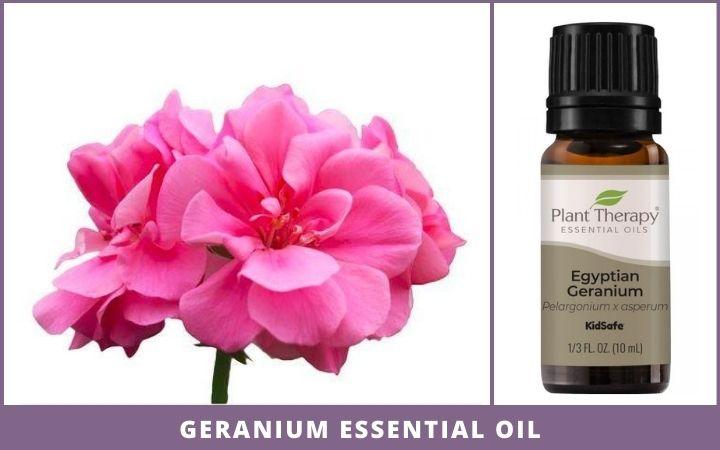 Geranium essential oil has a delicate but complex aroma that’s predominantly floral with earthy and sweet notes.
Geranium essential oil has a delicate but complex aroma that’s predominantly floral with earthy and sweet notes.
Its light floral aroma makes this essential oil a top choice for scenting bath and skincare products and perfumes.
The scent of Geranium blends well with Clary Sage, Basil, Jasmine, Lavender, and all oils from the citrus aroma family. When blended with other oils, it adds a subtle scent to the blend without overpowering the scent of the other oils.
Geranium is one of the best essential oils for the skin. Its uplifting aroma helps to reduce stress and anxiety and boost mood.
Benefits Of Geranium Essential Oil
Jasmine
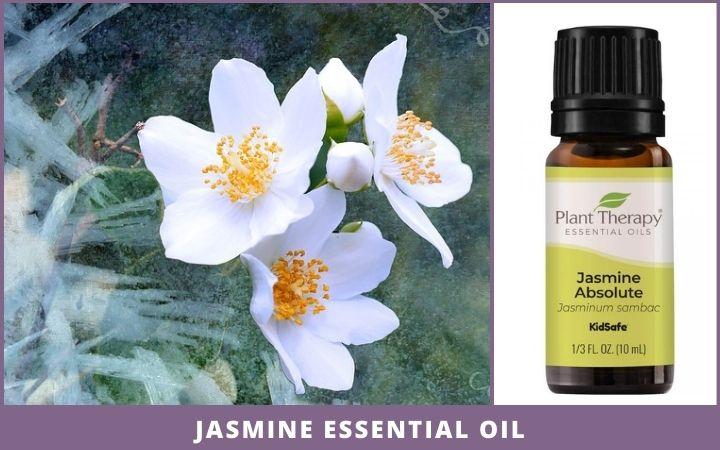 Jasmine essential oil has a rich, warm, and exotic aroma. Extracted from the large white petals of jasmine flowers, the strong, intense aroma of this oil sets it apart from other floral essential oils, which typically have more subtle scents.
Jasmine essential oil has a rich, warm, and exotic aroma. Extracted from the large white petals of jasmine flowers, the strong, intense aroma of this oil sets it apart from other floral essential oils, which typically have more subtle scents.
Jasmine blends well with oils from the citrus and woody aroma families. It must be added one drop at a time when blending with other floral oils as too much can overpower the other aromas.
Inhaling the warm intoxicating scent of Jasmine essential oil helps boost mood, energy, and self-confidence. It also has powerful aphrodisiac properties.
Use this recipe to make your own jasmine-scented body butter.
Ylang Ylang
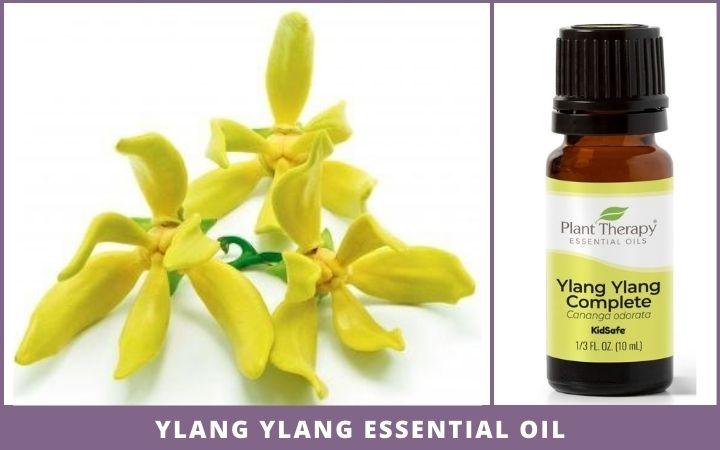 Ylang ylang essential oil is extracted from the star-shaped flowers of the ylang ylant plant and has a rich, syrupy sweet, intense aroma with subtle spicy notes.
Ylang ylang essential oil is extracted from the star-shaped flowers of the ylang ylant plant and has a rich, syrupy sweet, intense aroma with subtle spicy notes.
The rich, sweet floral aroma of this oil blends well with Sandalwood, Cedarwood, Bergamot, Rose, Orange, Jasmine, and all oils from the citrus aroma family. It is used sparingly in blends because of its powerful aroma.
Inhaling the aroma of ylang ylang helps promote relaxation.
Ylang Ylang essential oil benefits, uses, & blends
2. Citrus Aroma Family
The essential oils in the citrus aroma family have a fresh, clean, and refreshing scent that is associated with these fruits. The oils in this family smell almost exactly like the citrus rind from which they are extracted.
Citrus essential oils are versatile and blend easily with most other aroma families, especially the floral, woody, spicy, and camphoraceous families.
Oils from this aroma family are often added to energizing and deodorizing blends as well as antiseptic blends.
Citrus Essential Oils – The Ultimate Guide has more detailed information about the interesting scent profiles, benefits, and uses of oils in this aroma family.
Lemon
 Lemon essential oil has a cheerful, energizing aroma that’s fresh, clean, sharp and citrusy. It is extracted from the rind of lemon, and smells exactly like lemon peels.
Lemon essential oil has a cheerful, energizing aroma that’s fresh, clean, sharp and citrusy. It is extracted from the rind of lemon, and smells exactly like lemon peels.
Inhaling this clean, stimulating aroma reinvigorates the mind and spirit. It is refreshing reenergizing and evokes a sense of excitement.
Lemon essential oil blends well with Lavender, Geranium, Ylang Ylang, Juniper, Sandalwood, Roman Chamomile, Neroli, and other oils from the citrus aroma family. It is often added to blends that are meant to refresh, energize, and boost mental clarity and alertness.
Bergamot
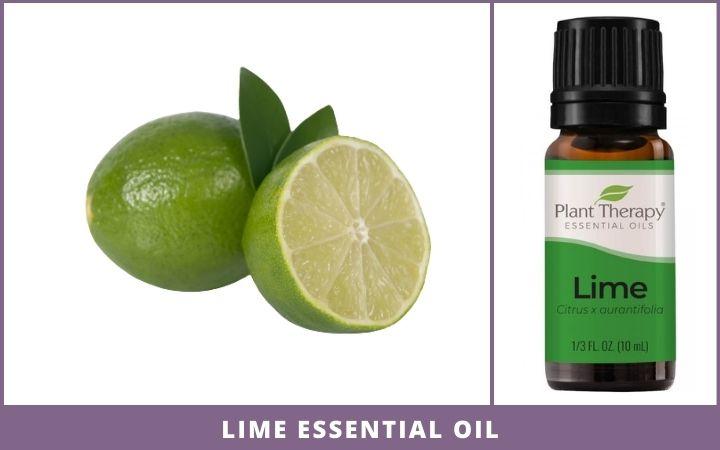 Extracted from the rind of the gnarly green fruit, Bergamot has a fresh-fruity-citrusy aroma with floral and spicy notes. is one of those versatile essential oils that are used in numerous blends.
Extracted from the rind of the gnarly green fruit, Bergamot has a fresh-fruity-citrusy aroma with floral and spicy notes. is one of those versatile essential oils that are used in numerous blends.
Yes, bergamot essential oil truly does have an intriguing and complex aroma. If you’ve never diffused this oil before, you’re in for a real treat.
Bergamot essential oil blends well with Lavender, Geranium, Neroli, Juniper, Roman Chamomile, Jasmine, Cypress, and citrus oils. Its light scent makes bergamot a versatile addition to a large number of blends.
What’s interesting is that bergamot adds citrusy notes to the blend when mixed with floral essential oil, it adds subtle floral notes to the blend when mixed with oils from the citrus aroma family. It’s often included in both, the floral and citrus aroma families.
Grapefruit
 Grapefruit essential oil has a sharp, fresh, bitter-sweet citrusy-floral aroma, just like the rind of the fruit.
Grapefruit essential oil has a sharp, fresh, bitter-sweet citrusy-floral aroma, just like the rind of the fruit.
The bright, happy aroma is cheerful, uplifting, and energizing. Inhaling this aroma inspires positive energy, alleviates anxiety, and cheers you up.
Grapefruit essential oil blends well with Bergamot, Geranium, Rosemary, and other essential oils from the citrus and spice aroma families.
Its powerful appetite-suppressant qualities make grapefruit one of the best essential oils for weight loss.
Sweet Orange
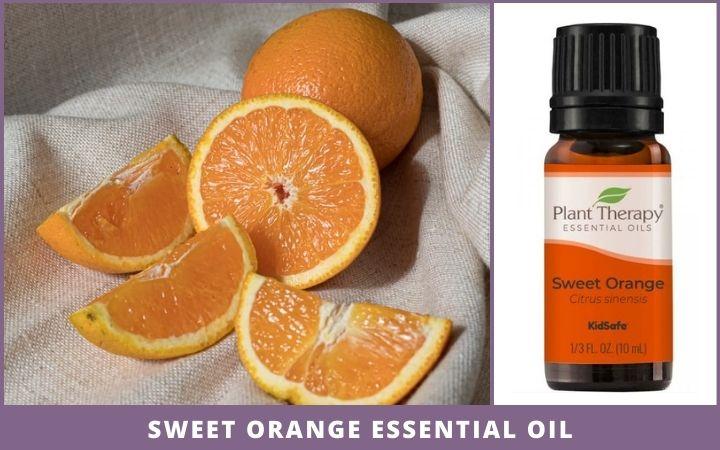 Sweet orange essential oil has a light, sweet, tangy, and fruity aroma that’s reminiscent of orange peels. The uplifting scent of this citrus oil makes it a huge favorite all year round.
Sweet orange essential oil has a light, sweet, tangy, and fruity aroma that’s reminiscent of orange peels. The uplifting scent of this citrus oil makes it a huge favorite all year round.
Sweet orange essential oil blends well with Neroli, Lavender, Clary Sage, Myrrh, and essential oils from the spice and citrus aroma families.
It is a popular addition in fall and winter blends that generally use oils from the spicy and woody aroma families. Adding a few drops of sweet orange adds subtle sweet notes to the predominantly spicy or woody aromas of the blend.
Sweet orange is one of the scents in several of these Fabulous Fruity Christmas Diffuser Blends With Essential Oils.
Lemongrass
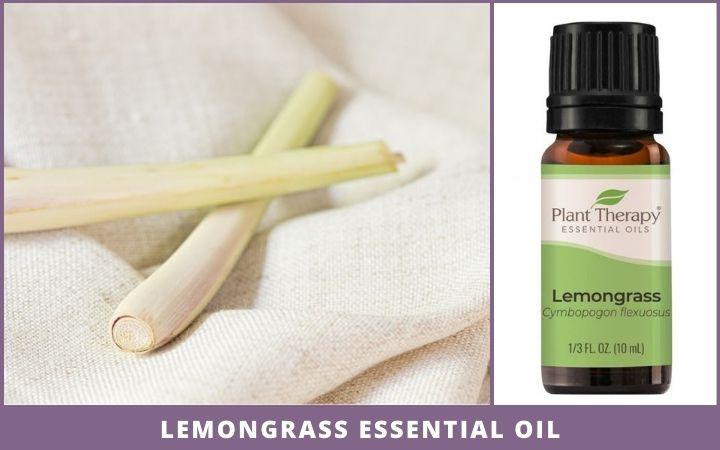 Lemongrass is an unusual inclusion in the citrus aroma family. Unlike other citrus oils, which are extracted from the rind of the fruit, lemongrass essential oil is extracted from the grassy stalks of the plant. It is included in the citrus aroma family because of its strong citrusy aroma.
Lemongrass is an unusual inclusion in the citrus aroma family. Unlike other citrus oils, which are extracted from the rind of the fruit, lemongrass essential oil is extracted from the grassy stalks of the plant. It is included in the citrus aroma family because of its strong citrusy aroma.
Lemongrass essential oil has a fresh, crisp, citrusy aroma with herbaceous, grassy notes.
It blends well with Lavender, Geranium, Cedarwood, Bergamot, and other oils from the citrus and herbaceous aroma families. Lemongrass infuses any blend it is added to with its light, refreshing aroma.
Lemongrass essential oil is combined with other oils in blends for reducing muscle pain and as an antibacterial agent. It is the best essential oil to add to your bath to soothe sore muscles.
3. Camphoraceous Aroma Family
Oils in the camphoraceous family have an unmistakable sharp, menthol aroma. Essential oils in this family are often used in blends for the respiratory system because of their aroma.
Camphoraceous oils blend well with oils from the herbaceous, citrus, earthy, and woody aroma families.
Peppermint
 Peppermint essential oil has a fresh, sharp, sweet, and minty aroma with subtle grassy notes.
Peppermint essential oil has a fresh, sharp, sweet, and minty aroma with subtle grassy notes.
Peppermint blends well with Lavender, Spearmint, Rosemary, Eucalyptus, and oils from the woody and citrus aroma families. It has a strong aroma and must be used sparingly in blends.
This widely used camphoraceous oil is packed with several powerful therapeutic properties. It is the best essential oil for soothing headaches, hangovers, and nausea.
Top 10 Benefits of Peppermint Essential Oil
Tea Tree
 Extracted from the melaleuca plant, tea tree oil essential oil has a pungent, medicinal aroma with peppery and earthy notes.
Extracted from the melaleuca plant, tea tree oil essential oil has a pungent, medicinal aroma with peppery and earthy notes.
Tea tree blends well with Peppermint, Eucalyptus, Rosemary, Lavender, Lemon and Clove essential oils.
This oil is better known for its health benefits than its aroma. Its antimicrobial properties make tea tree the best essential oil for acne . It is uses in a wide range of skincare products, especially anti-acne creams, and lotions.
Tea tree essential oil also helps ease respiratory ailments and cleanses toxic emotions that disrupt your health and wellbeing.
Eucalyptus
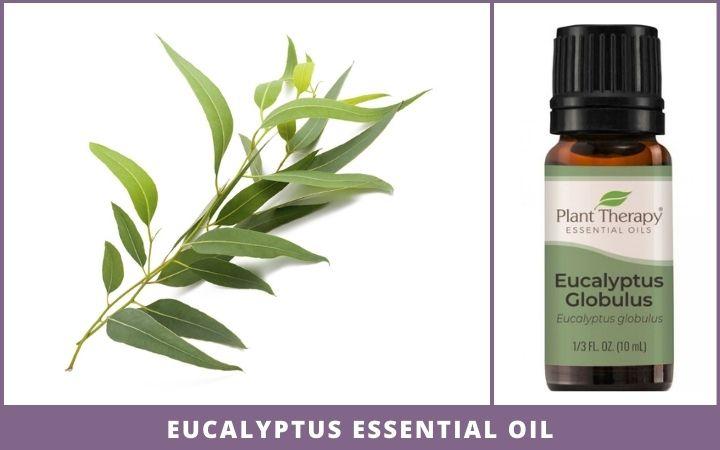 Extracted from the oil-rich leaves of the eucalyptus tree, this oil has a fresh, sharp medicinal and camphor aroma with slightly woody notes.
Extracted from the oil-rich leaves of the eucalyptus tree, this oil has a fresh, sharp medicinal and camphor aroma with slightly woody notes.
Eucalyptus blends well with Pine, Lavender, Rosemary, and oils from the earthy and citrus aroma family. It blends particularly well with Peppermint and Lemon essential oils.
Eucalyptus essential has potent anti-inflammatory, antiseptic, and decongestant properties and is one of the main ingredients of many over-the-counter decongestant medicines.
This is the best essential oil for colds and congestion. When inhaled through a steam bath, the sharp aroma of eucalyptus works very well to clear the sinuses.
More Benefits Of Eucalyptus Essential Oil
4. Herbaceous Aroma Family
The herbaceous aroma family includes some very versatile essential oils that are extracted from popular kitchen herbs. The aroma of these oils is very characteristic of the herb they are extracted from.
Most oils from the herbaceous aroma family are considered safe for ingestion as per the FDA. They can be used as flavoring agents, unlike most oils from other aroma families, which are not safe for ingestion.
Oregano
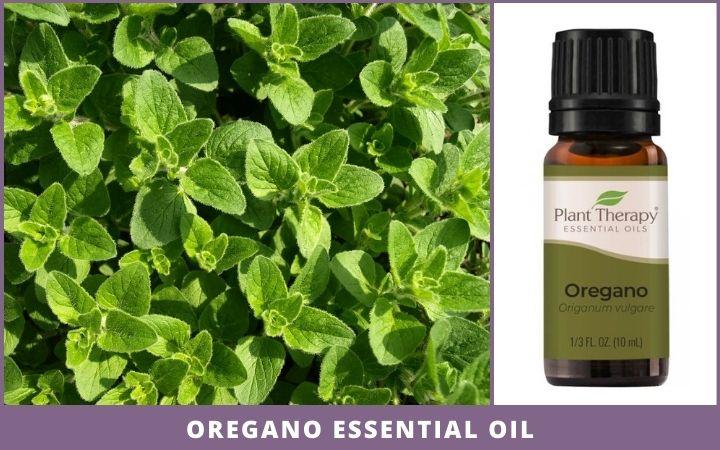 Extracted from the oregano herb, oregano essential oil has a spicy, peppery, and slightly woody aroma with a hint of camphor.
Extracted from the oregano herb, oregano essential oil has a spicy, peppery, and slightly woody aroma with a hint of camphor.
It blends well with Cedarwood, Pine, Cypress, Chamomile, Lavender, Bergamot, and Tea Tree essential oils. It also blends well with oils from the citrus aroma family.
Oregano essential oil can be diluted with a carrier oil such as coconut oil or avocado oil and applied to the skin to reduce wrinkles and scars.
It also has strong antibacterial, anti-inflammatory, and anti-inflammatory properties, making this an excellent oil to diffuse when you have a cold or flu.
Rosemary
 Rosemary essential oil has a fresh strong woody aroma with a hint of camphor, pine, and mint, similar to the fragrant herb it is extracted from.
Rosemary essential oil has a fresh strong woody aroma with a hint of camphor, pine, and mint, similar to the fragrant herb it is extracted from.
It blends well with Peppermint, Eucalyptus, Cedarwood, Basil, Lavender, and oils from the citrus aroma family.
It has a very powerful aroma so you need to be careful about adding it to any blend. Add only one drop at a time to avoid overpowering the other scents.
Rosemary is the best essential oil for stimulating hair growth, and nourishing dry scalp.
Marjoram
 Marjoram essential oil has a warm woody, sweet-n-spicy aroma with camphoraceous notes.
Marjoram essential oil has a warm woody, sweet-n-spicy aroma with camphoraceous notes.
This herbaceous oil blends well with Juniper, Cedarwood, Pine, Peppermint, Bergamot, Eucalyptus, Lemon and Rosemary essential oils.
Extracted from the marjoram herb, this essential oil has proven pain-relieving and stress-reducing properties. Marjoram Essential Oil Benefits & Uses
Marjoram essential oil is often added to blends to soothe arthritis-related joint pain and in stress-relieving blends.
Basil
 Basil essential oil has a fresh, sweet, and spicy aroma with a hint of anise. The aroma is uplifting and energizing.
Basil essential oil has a fresh, sweet, and spicy aroma with a hint of anise. The aroma is uplifting and energizing.
It blends well with Lemon, Bergamot, and Geranium essential oils.
Basil essential oil helps reduce muscle pain and fatigue, which makes it a powerful addition to any energizing and pain-reducing blend.
Clary Sage
 Clary sage essential oil has a heady herbal, sweet aroma with notes of tea.
Clary sage essential oil has a heady herbal, sweet aroma with notes of tea.
It is often mistaken for being a floral essential oil because of its showy flowers and its mildly floral scent. However, its scent and properties align more with those in the herbaceous aroma family.
Clary sage blends well with Bergamot, Cedarwood, Lavender, Geranium, and oils from the citrus aroma family.
The aroma of clary sage is relaxing and healing. This versatile oil is widely used to scent bath and body products. It also works as a natural deodorant and can be used to deodorize your home.
5. Spicy Aroma Family
Like herbs, oils in the spicy aroma family are extracted from various spices that are commonly used in cooking. Every spicy oil smells the same as the spice it is extracted from.
Oils from the spicy aroma family are warming and hugely popular during fall and winter. They may be diffused by themselves or combined to create blends with wonderfully complex aromas.
Spice oils blend well with oils from the floral, citrus, and woody aroma families.
Nutmeg
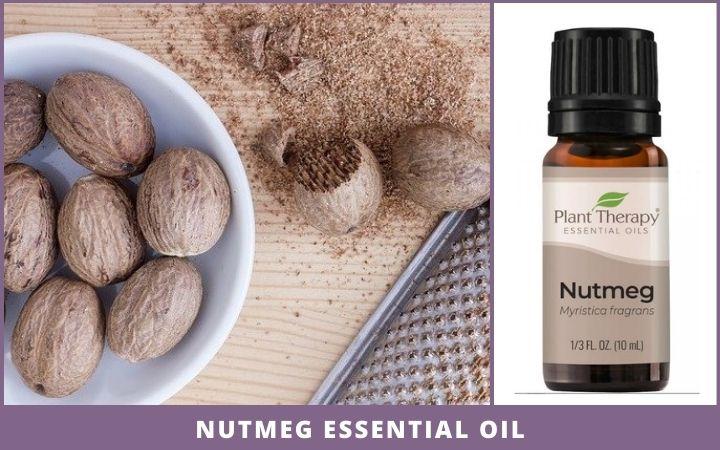 Nutmeg essential oil has a sharp sweet-and-spicy, warm, nutty aroma. It is one of the more widely used spicy essential oils and is a popular addition to seasonal blends, especially during fall and the Holiday season.
Nutmeg essential oil has a sharp sweet-and-spicy, warm, nutty aroma. It is one of the more widely used spicy essential oils and is a popular addition to seasonal blends, especially during fall and the Holiday season.
In the fall, nutmeg essential oil is used to create several fall scents such as pumpkin spice, and Halloween blends. During the holiday season, it is used to create blends that are reminiscent of Christmas treats such as gingerbread cookie blends.
Nutmeg essential oil blends well with Cinnamon, Ginger, Clary Sage, and oils from the citrus aroma family. It goes particularly well with Sweet Orange essential oil.
Nutmeg EssentiaL Oil Benefits &Blends
Cinnamon
 A huge favorite during the Holidays, cinnamon essential oil has a sharp, sweet, spicy, and woody aroma that smells distinctly of cinnamon.
A huge favorite during the Holidays, cinnamon essential oil has a sharp, sweet, spicy, and woody aroma that smells distinctly of cinnamon.
Cinnamon essential oil blends well with Ylang Ylang, Grapefruit, Sweet Orange, Ginger, Frankincense, and Mandarin essential oils. Cinnamon adds a sharp sweet scent to any blend.
Diffusing cinnamon essential oil during the Holidays, either by itself or in these Christmas Diffuser Blends will fill your home with the warm, inviting scent of home baking.
Cinnamon Essential Oil Benefits & Uses
Clove Bud
 Clove essential oil has a warm, spicy, woody aroma. There’s nothing quiet and shy about this strong, distinctive aroma.
Clove essential oil has a warm, spicy, woody aroma. There’s nothing quiet and shy about this strong, distinctive aroma.
Clove blends well with oils from the floral and citrus aroma families. It must be used sparingly in blends because its strong aroma can quickly overpower that of the other oils in the blend.
This spicy essential oil is packed with antioxidants, which gives the oil its many healing powers. It is the best essential oil for soothing toothaches.
Clove is the main ingredient in the hugely popular Thieves Essential Oil Blend from Young Living.
Ginger
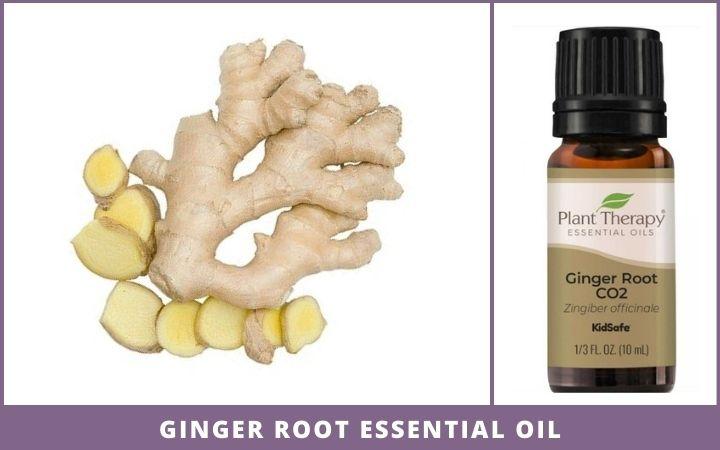 Ginger essential oil has a sharp, warm, earthy aroma with peppery notes. It blends well with Cedarwood, Ylang Ylang, Lavender, and oils from the citrus aroma family.
Ginger essential oil has a sharp, warm, earthy aroma with peppery notes. It blends well with Cedarwood, Ylang Ylang, Lavender, and oils from the citrus aroma family.
Ginger essential oil is very versatile and makes a great addition to most seasonal and specialty diffuser blends.
In addition to having aphrodisiac properties, ginger is one of the more effective essential oils for digestion.
Cardamom
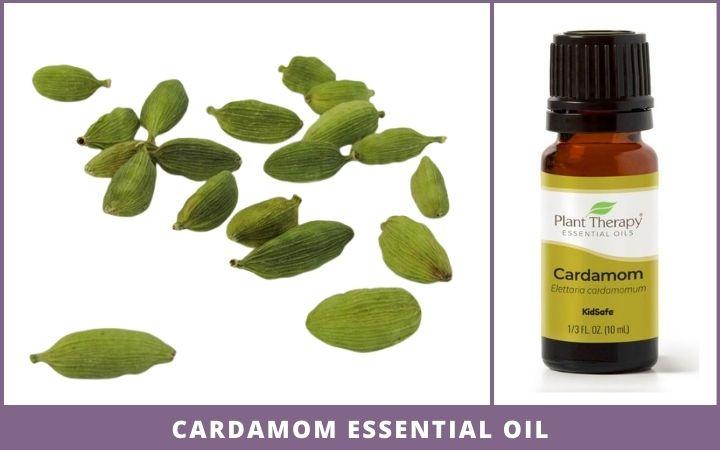
Cardamom essential oil has a warm, sweet-spicy aroma with camphoraceous and balsamic notes.
It blends well with Cedarwood, Frankincense, Ylang Ylang, Bergamot, and oils from the citrus family.
Inhaling the grounding, warming aroma of cardamom essential oil can help reduce nausea.
6. Woody Aroma Family
Essential oils in the woody aroma family are extracted from the leaves or bark of trees. This is unlike other essential oils, which are extracted from various plant parts. For an essential oil to be categorized as a woody oil, it must be extracted from a tree part not a plant part.
Woody essential oils blend well with oils from the floral, citrus, herbal, spicy, and camphoraceous aroma families. They lend a grounding, woody aroma to the blends they are added to.
Fir
Fir or fir needle essential oil has a fresh, rich, pine, forest aroma with subtle balsamic and resinous notes. Its scent is a little lighter than that of most other oils in the woody aroma family.
Fir essential oil blends well with Pine, Juniper, Lavender, Patchouli, Rosemary, and oils from the citrus aroma family.
This is a hugely popular scent during the Holidays. It can be diffused by itself or in blends to fill your home with Christmas cheer.
Fir is the main scent used to create a variety of blends that smell like a Christmas tree. It is also used liberally in blends with other woody and earthy scents.
Cedarwood
 Cedarwood essential oil has a warm, fresh, sweet woodsy aroma with balsamic and camphoraceous notes. The aroma is cozy and comforting.
Cedarwood essential oil has a warm, fresh, sweet woodsy aroma with balsamic and camphoraceous notes. The aroma is cozy and comforting.
It blends well with Bergamot, Ylang Ylang, Jasmine, Cypress, Juniper, Patchouli, Rosemary, Frankincense, and Vetiver. It adds a lovely fresh, woodsy aroma to any essential oil blend.
Diffuse cedarwood essential oil during any season and you will immediately be transported outdoors with lovely memories of spring walks through the woods. It is a popular addition to masculine blends.
Juniper Berry
Extracted from the leaves and stem of the evergreen shrub, Juniper Berry essential oil has a fresh, pine, woody, peppery aroma with subtle balsamic notes. It is especially popular during winter.
Juniper essential oil blends well with Grapefruit, Lavender, Geranium, Clary Sage, Sandalwood, Cypress, and Cedarwood.
The oil has detoxifying and antiseptic properties. It can be used to alleviate respiratory issues and soothe the digestive system.
Cypress
 Cypress essential oil has a fresh, smoky, sweet, spicy, and slightly nutty and balsamic aroma.
Cypress essential oil has a fresh, smoky, sweet, spicy, and slightly nutty and balsamic aroma.
This is a versatile essential oil that blends well with Cedarwood, Pine, Juniper, Chamomile, Lavender, Bergamot, Clary Sage, and oils in the herbaceous aroma family.
Cypress essential oil can be diffused as a relaxing essential oil or applied topically to manage oily skin and scalp.
Sandalwood
Sandalwood essential oil has a soft, warm, sweet, and woody aroma with subtle balsamic undertones. The intensity of the aroma depends on the age of the trees it is extracted from. The older the tree, the stronger the aroma.
This elegant oil blends well with Bergamot, Geranium, Lavender, and Vetiver.
Sandalwood is a popular addition to feminine perfumes and is also used in all types of skincare products. It has strong astringent, antispasmodic, and sedative properties.
7. Resinous Aroma Family
Oils in the resinous aroma family have complex aromas that can best be described as warm, party earthy, partly woody, and partly spicy. These oils are extracted from the resins found naturally in certain trees and shrubs.
Resinous oils blend well with oils in the citrus and floral aroma families. Their grounding properties make them a popular addition to blends for relaxation and meditation.
Frankincense
 Extracted from the Boswellia tree, frankincense has a warm, balsamic, sweet, and spicy aroma.
Extracted from the Boswellia tree, frankincense has a warm, balsamic, sweet, and spicy aroma.
Frankincense blends well with Sandalwood, Pine, Myrrh, Patchouli, Vetiver, Basil, and oils from the floral and citrus aroma families.
It’s grounding aroma makes frankincense one of the best essential oils for meditation. It is a very popular scent in aromatherapy and is often used in blends created for meditation.
Frankincense and myrrh complement each other very well and are often combined together in blends.
Myrrh
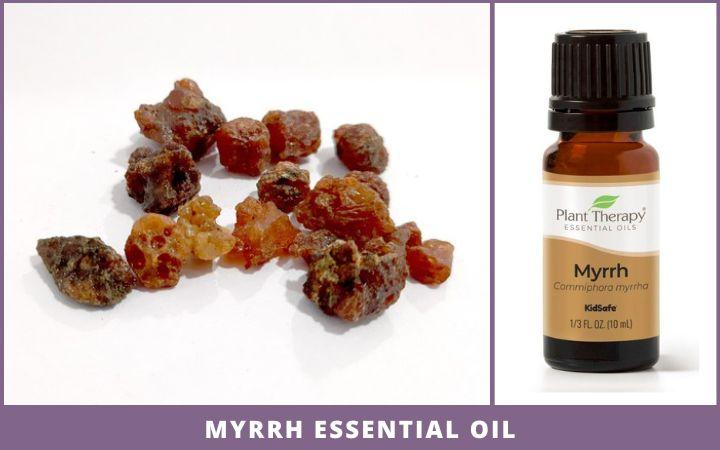 Myrrh essential oil has a warm, spicy, balsamic aroma that’s slightly woody and earthy. It is extracted from the Commiphora Myrrha tree that grows in Africa and the Middle East.
Myrrh essential oil has a warm, spicy, balsamic aroma that’s slightly woody and earthy. It is extracted from the Commiphora Myrrha tree that grows in Africa and the Middle East.
Myrrh essential oil blends well with Frankincense, Sandalwood, Lavender, Rose, Bergamot, Lemon, Patchouli, Cypress, Juniper, and Mandarin.
Myrrh blends very well with frankincense. Both oils are often used in the same blends.
8. Earthy Aroma Family
The earthy aroma family is one of those categories that have aromatherapy enthusiasts firmly divided into two camps. Some love the earthy aroma that’s reminiscent of wet earth, while others won’t have anything to do with them.
Essential oils in the earthy aroma family are more commonly used in masculine scents. These powerful aromas are used as base notes in masculine perfumes. When adding to blends, add one drop at a time to avoid overpowering the perfume.
Earthy oils blend well with oils from the woody and camphoraceous aroma families.
Patchouli
Patchouli essential oil has an earthy, musky aroma with floral and herbaceous notes. Aged patchouli oils are especially popular because of the hints of vanilla in the scent.
Patchouli blends well with Vetiver, Cedarwood, Sage, Neroli, Clary Sage, Rose, Lavender, Geranium, and oils from the citrus aroma family.
Extracted from various parts of the tropical patchouli plant, this strongly scented oil is often used in men’s or unisex perfumes, as well as many health blends.
Vetiver
Vetiver essential oil has a heavy earthy aroma that’s reminiscent of wet soil and roots with very slight lemony notes.
Vetiver blends well with Patchouli, Sandalwood, Clary Sage, and Lavender. It adds a touch of lemony freshness to your diffuser blends.
This is a calming and grounding scent that works well for meditation and relaxation.
How To Use Your Knowledge of Essential Oil Aroma Families
Understanding essential oil aroma families can be helpful when creating your own bespoke blends, whether for aromatherapy purposes or for health purposes.
When making your own essential oil blends, some will be hits and others will be misses. It’s okay though. That’s the only way you are going to discover the ‘Next Best Blend’ for you.
The best part about experimenting with making your own blends is that one day you are sure to stumble upon a blend that you will fall completely in love with. You can then go on to make that your signature aroma.
While there are no rigid rules to adhere to when making essential oils blends, there is one thing to keep in mind. You will get the best results when you combine scents that complement each other.
Generally, this means choosing essential oils based on the aroma family they belong to. Having said that, this rule is not written in stone. Feel free to go against the norm and mix and match to your heart’s content.
Oh yeah, don’t forget to write down what oils you’ve used and in what ratio so you can replicate your successes and avoid your failures.
Best Essential Oil Brand To Start Your Aromatherapy Journey
The first thing you’re going to need is an assortment of essential oils from different aroma families so you can mix and match the scents t0 create customized diffuser blends.
If you are new to aromatherapy and have not yet purchased any essential oils, Plant Therapy is the best place to start your collection. Their essential oils are of the highest quality and pretty reasonably priced too. In addition, shipping is free, which adds to your savings.
Read my detailed Plant Therapy Essential Oils Brand Review to see why this is my #1 recommended brand for buying essential oils, diffusers, and other aromatherapy-related products.
Buying a set of essential oils works out cheaper than buying single oils.
Plant Therapy offers a great price on this Top 14 Essential Oils Set. This essential oil set includes oils from assorted aroma families so you can have fun experimenting with various combinations without having to buy any additional individual oils unless you have a specific blend recipe that you want to try.
You’ll also find a nice assortment of essential oil sets here. All of these are high-quality oils from reputed companies.
If you want to buy individual essential oil bottles, read this first – Ultimate guide to buying essential oils: 10 Things to take into consideration
Essential Oil Blends Recipes & Ideas To Help You Get Started
Check out these resources for tips and ideas to get started:
Blending Essential Oils: Master The Art Of Blending Oils & Aromas
Create Customized Perfumes with Essential Oils
Assorted Diffuser Blend Recipes
Host an Essential Oil Make & Take Party and let everyone create their own customized blends using different combinations of essential oils from different aroma families.
Buy an essential oil set today and have fun experimenting with essential oils and their aroma families!

Disclaimer: This information is not intended to serve as medical advice. Please consult your physician before using essential oils. See Full Disclaimer here.

